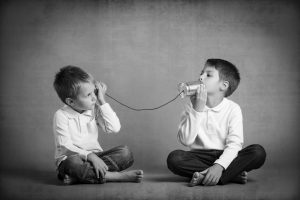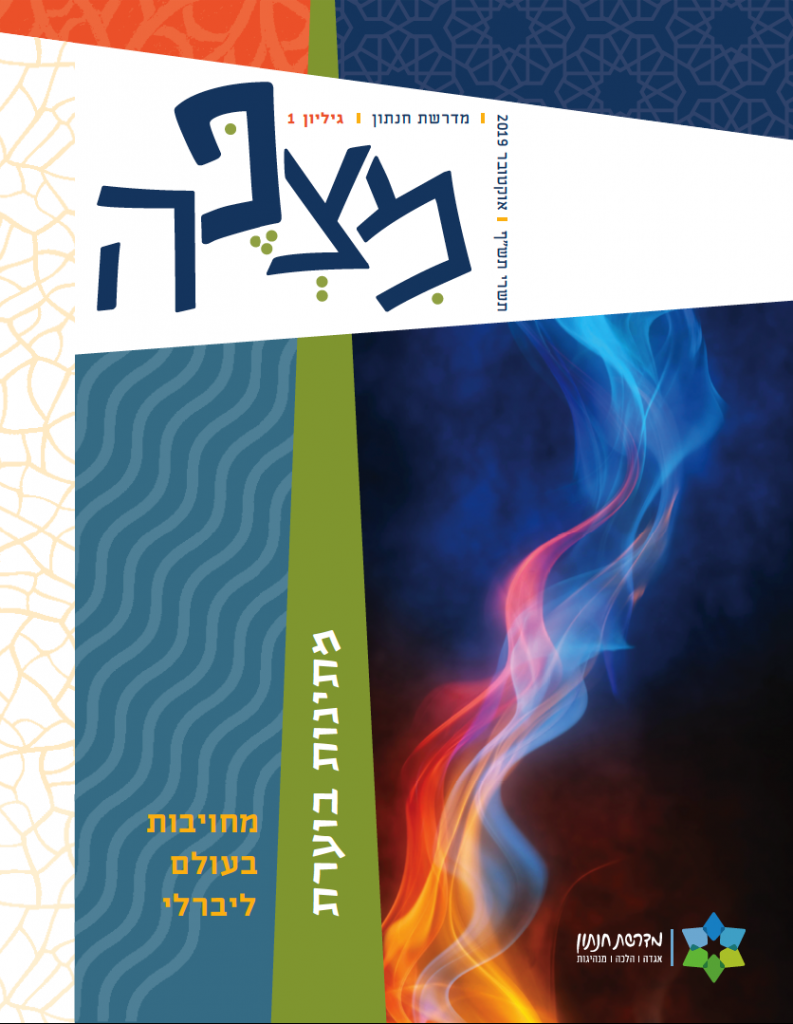שָׁם יֵשׁ סוּפוֹת שָׁם יֵשׁ בְּרָקִים
שָׁם יֵשׁ קוֹלוֹת וְאֶבֶן עַל עֵצִים
שָׁם כֶּסֶף זוֹרֵחַ וְשָׁם יֵשׁ חַיִּים
וּבָעֵבֶר הַשֵּׁנִי שׁוֹתְקִים וְנֶחְבָּאִים.
שָׁם יֵשׁ תְּנוּעוֹת שָׁם יֵשׁ גַּלִּים
שָׁם יֵשׁ זְמִירוֹת וְכֶפֶל אֲהָבִים
שָׂם גּוּפוֹת שְׁמֵימִיִּים וְשָׁם מְצֻיָּצִים
וּבָעֵבֶר הַשֵּׁנִי נֶחְבָּאִים בַּמַּמָּשִׁים.
שָׁם יֵשׁ רְפִידוֹת שָׁם יֵשׁ שׁוֹשַׁנִּים
שָׁם מִתְעַלְּסִים שָׁם תּוֹמְכִים אֲהוּבִים
שָׁם מְחַלְּלִים בַּחֲלִילִים לַחֲלָלִים עוֹמְדִים
וּבָעֵבֶר הַשֵּׁנִי נֶחְבָּאִים וְאֵין זוֹרְמִים.
(יונה וולך)[1]
[1] וולך, י' (1976). שירה. תל-אביב: ספרי סימן קריאה.
What Is Myth?
There—everything exists and is possible, turbulent and unbridled, dramatic, fascinating, and not understood. And on the other side, here—the opposite picture; everything is measured and limited, palpable. There, in the realm of dreams and mythology, a rich and wild portrait of the world is presented, which serves as a reverse reference point for our own palpable, real, contemporary world.
One theme that emerges from theoretical writing about myth is the tension between myth and logos. Understanding that tension requires a bird’s-eye-level conceptual clarification of the essence of myth. As a generalization, one can say myth is a story—a tale with its own internal logic—that bears broad cultural influence. Many have sought to characterize the sources of myth. Some have seen it as a shared creation from the depths of the human soul in which human experience finds expression, or a body of work that supplies big answers to big questions, provides meaning and order amid the chaos of being and creates a sense of security from the very fact of understanding the flow of reality, as Marc Rozelaar says: “It gave and gives the meaning what is.”[1] Myth is, in the philosopher Schelling’s definition, a concept of narrative philosophy—the matrix of connection that has meaning that aims to explain what takes place and what must take place. The philosopher Martin Buber regarded myth as a narrative expression of true events that had passed thought an internal processing: Some have examined myth in the context of human psychology: Freud regarded myth as a collective dream, and Jung saw it as the place in which the collective unconscious finds expression, a sort of “Big Data” that humankind passes on from generation to generation. S. Giora Shoham, a criminologist and polymath thinker, sees all myth as a reflection of early psychological processes of the individual person: “Myths are a projection of the development of the species, as inherent in the development of the individual.”[3] People’s primal experiences become a sort of projector that creates a film of mythologies, and “[t]he more common a developmental experience, the greater its chances of becoming a mythical projection.”[4] It is a sort of process of transition from the inner-psychic human microcosm to the mythological macrocosm.
Beyond the question of the sources for the creation of myth, however, some have regarded myth as a human creation whose function is to provide a response to the collective emotional difficulties that stem from the individual’s encounter with reality that is external to them. The scholar of religions Mircea Eliade saw myth as a sort of redeemer of the human soul that restores ancient glory through rituals, redeeming it from the terror of one-directional, meaningless chronological time and thus connecting man to large meanings. The philosopher Leszek Kołakowski regarded myth as a system of encoded signs sent by an unempirical, mythical world directly to human experience with the aim of overcoming the world’s indifference: “In fact, the experience of the world’s indifference creates the alternatives: either we shall overcome the alienness of things through their mythical organization or we shall conceal this experience from ourselves in a complex system of arrangements which disperse life in daily facticity.”[5] In his view, myth creates a feeling of “domestication of being,” moving from a stormy, indifferent and inscrutable reality to a reality in which one can feel at home.
There have been some who identified the function of myth in anthropological and sociological terms, among other things, the embedding of ethical elements in society—in an aura of palpability mixed with wonder—and the creation of models for identification and imitation. The theoretician Roland Barthes, for example, argued that every discourse and every description of reality is fraught with ideology, and that myth sets up the written text as a natural canon not subject to controversy. Some have seen myth as an instrument for justifying institutions and rights, as a fund of basic information for socialization, as a symbolic representation of collective desires, and as constituting a motive force in the life of a culture and its politics. People, after all, beyond their organizational needs from society, are nurtured as well by shared hope that is expressed in myth.
Once logos has tried to clear away from consciousness, the mists of myth, logos is revealed as a myth itself.
Logos and Demythologization
Against the primitive richness of myth stood logos—logic, human understanding. The basic assumption of logos is that the human being is capable of knowing reality in all its basic elements. Human logos lies outside natural and historical events, and, as such, it is able to fit reality into categories and systems of fixed, established truths. The conservative thinker Michael Oakeshott characterized the rationalist this way:
At bottom he stands (he always stands) for independence of mind on all occasions, for thought free from obligation to any authority save the authority of “reason.” […] His mental attitude is at once skeptical and optimistic: skeptical, because there is no opinion, no habit, no belief, nothing so firmly rooted or so widely held that he hesitates to question it and to judge it by what he calls his “reason.” […] “Rapid[ly] he reduces the tangle and variety of experience to a set of principles which he will then attack or defend only upon rational grounds.” […] “The mind of the Rationalist … impresses us as … a finely tempered instrument.” […] [H]is intellectual processes, so far as possible, are insulated from all external influence.[6]
The logical thinker claims to create a taxonomic understanding of all the phenomena in reality, to subject them to rules of classification based on a scientific and rational methodology that takes us to the root of things as they are in themselves, with the truth in them forced on the person who locates it, unaffected by any identification or personal projection.
The perception of logos and science as the sole organizing anchor for understanding reality came to occupy a central role. Logic was supposed to create a process of demythologization—examining, revealing, and dismantling the myths enveloping individuals and society in order to free the latter from ignorance, prejudice, religious fanaticism, and primitive destructive impulses, to render the individual into a sovereign subject who rules over an environment of many objects. In Immanuel Kant’s terms, enlightenment should move humankind from a juvenile stage to its adult stage. The logical person will base life on principles that are stable, scientific, empirical, reflective, and universal, confirming his findings in a path composed of linked assumptions joined in causal chain of logic. That pattern expanded beyond the field of science and scholarship into the realms of morality, esthetics, and politics, becoming the wind fanning the coals of the grand ideologies and bringing about various revolutions and the rise of the great debate between liberalism—espousing freedom—and Marxism and similar ideologies, which championed equality.
The tension between the two types of thought and discourse is clear: Science seeks out the truth, aims to locate the present object even before we discover it, while myth sees reality as a subject bearing a message. The person of science goes from the phenomenon’s evident aspects to its inner core; the person of myth understands and explains according to the phenomenon’s meaning. The scientist discovers the static patterns of reality; the mythologist finds the immanent flow of the universe. Mythology includes multiple, sometimes even conflicting, explanations for the same phenomenon, while logic has been bound to the rule of non-contradiction since the time of Aristotle. Myth includes within itself both question and answer, and sometime the answer is present even before the question arises; science is the journey of a question toward an answer, and sometimes—as the thinker Karl Popper argued—even after the answer has been found, it is considered scientific precisely because of its still being subject to doubt. Science reveals the impersonal, non-personal world; myth gives personal form to each phenomenon or situation, using it to tell about reality and its meanings. Myth is overflowing with action and motivations, while science tries to clear away the narrative and personal mist built up around phenomena. Myth creates a consciousness of being part of the world; science faces the world and investigates it as a phenomenon. Science works within the gap between the investigating subject and the investigated object, between the subject’s mistaken illusion and objective truth, between impression and knowledge. It does all this through a process of diagnosis, critique, and empirical confirmation or denial. Myth, in contrast, using story and symbol, denies the existence of all those sorts of distinctions. If we wish to use Martin Buber’s terms, the scientist is in an “I-it” relationship with the world and the mythologist is in an “I-thou” relationship.
Humankind is in search of the distant, dramatic, mysterious “there” that echoes meanings and context to the “here” of concrete, quotidian reality.
Logos as Myth
These gaps between myth and logos have been perceived in the Western world as a central drama and even as a mission: Logos is here to redeem us from myth. However, in addition to social, economic, and political processes that have taken place, many voices have attacked the very objectivity of logos. Some of those thinkers have identified the presence of a mythical trend of thought in many non-mythological spaces, essentially erasing the dichotomy between those two patterns of discourse. Some have pointed to the vast empty space left behind by myth, among them the sociologist Max Weber, who spoke about the rejection of myth as the “disenchantment of the world.”[7] (Almost every child loves magicians and enjoys the excitement of not knowing, and later discovers the “trick” behind the magic, enjoying having discovered the truth, but at the same time losing one basis for the enchantment of his world.) Others have attacked the concept of science as a solid anchor reflecting reality. For example, Thomas Kuhn saw the scientific process as the scene of competition among paradigms. A central attack came from the direction of post-modernism, which undermined repressive “logocentricity.” One of its central arguments was that logos itself is a kind of myth whose validity is a result of choice and of power relations in human society. After logos attempted to dispel the clouds of myth from consciousness, logos was revealed as a myth itself. Friedrich Nietzsche spoke about “the gay science.” Michel Foucault regarded science as a procedure that had undergone ritualization and universalization in an attempt to be perceived as a general rule in order to support power relations within society. Deconstructionism, led by Jacques Derrida, identified the mythological cracks in the basic assumptions of the rational and denied the a priori existence of logos at the base of reality. Conservative thought too, on the basis of a similar insight but with different emphases, took part in the attack on logos: Oakeshott identified an irrational component in the rationalist’s disregard of accumulated human experience expressed in tradition and custom, and the rationalist’s attachment to assumptions that are, at base, not rational:
[He is] optimistic, because the Rationalist never doubts the power of his ‘reason’ (when properly applied) to determine the worth of a thing, the truth of an opinion or the propriety of an action. Moreover, he is fortified by a belief in a ‘reason’ common to all mankind […] He has no sense of the cumulation of experience, only of the readiness of experience when it has been converted into a formula.[8]
Those processes split apart logos as a solid anchor of relation to reality. Myth and logos came to be perceived as two types of discourse of equal value, types of perceptions of reality neither one of which constitutes a “truer” representation of being.
The Return of Myth
Beyond the contexts of ideas and philosophy, one can see that humankind is again seeking out myth, the accessible story that supplies meaning, similar to the human world in all its complexity but larger than life and distant from it as well. Humanity, we see, is looking for the distant, dramatic, mysterious “there” that echoes meanings and contexts to the “here” of daily life. Over the course of the twentieth century, the romantic element of reality entered the cultural discourse, and—alongside it—psychoanalysis, which focused on the non-rational roots underlying human behavior. In those years, the attraction of mythological and non-Western religious ways of thinking, which attempted to open the doors of consciousness, grew strong. The West imported those trends of thought, manifested in the American version in the 1960s, the later New Age adaptation, and in its radical expression in the form of the worldwide jihad.
One of the characteristics of mythical thinking is the personalization of trends and phenomena in reality—turning exoteric reality into a story at whose core are hidden motives. Since its beginning, the twenty-first century has been marked as loaded with areas that have a mythological structure of perception:
- The soaring popularity of fantastic and apocalyptic historical contents in popular culture;
- Books of popular science become best-sellers when they “gather” data from varied disciplines and weave them into a story that provides an encompassing explanation of trends in human history and the human future;
- Central institutions that were perceived as neutral and capable of cold, impersonal judgment based on evidence (law enforcement institutions, courts of law) are perceived by growing portions of the public as doing nothing more than representing narratives, motives, impulses and power relations;
- Basic principles of democratic government, such as the separation of powers, appear worthless compared to the dramas of interests and power relations and are not above that drama but constitute another player in it;
- Institutions of mass communications that were perceived as decisively reliable are perceived today as the scene of agendas for preserving power, and the information in them is always suspect of being “fake news”;
- Political campaigns based on ideology and ideas are becoming campaigns focused on individuals and tend toward populism along an axis from idealization to devaluation;
- Practices of emotional therapy are moving from the hierarchical psychoanalytic model of all-knowing therapist to intersubjective and narrative models;
- Empirical medical science is becoming optional for the patient, who is exposed to alternative systems and is deeply suspicious about the economic interest behind medical research and practice themselves;
- Physics is moving from a model of inanimate, indifferent material to one of material that reacts to those observing it;
- Canonical institutions for the creation of knowledge based on hierarchies of experts, such as the academy and its laboratories, are suspected of being ivory towers acting to preserve their hegemonic status;
- Conspiracy theories telling complicated tales replete with desires and plots and claiming to explain many phenomena in reality continue to gain traction in public discourse;
- The social networks create new and dynamic mythologies with metaphysical components—a never-ending feed, online clouds, and omniscient algorithms, internet titans who constitute a lively, impulse-driven, conflict-ridden Olympus along with its being accessible to everyone creating meanings and explanations of reality, the “story” by means of which shared existence is redeemed from its purposelessness by changing oneself from a subject to a documented object that frequently addresses anonymous but responsive individuals;
- And there is more.
It seems that the human realm—its institutions and its cultural, political, and social infrastructures—all these became a “,” in Kołakowski’s term, a collection of motive forces and impulsive actions.
A society enveloped in myths may lose its brakes, the necessary regulation mechanisms that logic introduces into human activity.
Living Myth
The long-held suspicion toward mythical thinking has some basis, though. A society enveloped in myths may lose its brakes, the necessary regulation mechanisms that logic introduces into human activity. For many long years, the West invested in its attempts to create infrastructures for regulating the conflict between multiple interests and the fact of limited resources. Many years were invested in restraining the non-rational, primal bases that bring with them destructive tendencies and bloody conflicts. Sweeping away myth as an explanatory cloak for present reality may cause a blurring of the essential Realpolitik anchors and a wearing away of necessary humanistic sensitivities. Benighted regimes in particular contained a fateful mythological story about reality, and through it they wrought dramatic destruction upon humankind. A society enveloped in mythic spaces is in danger of trying to manufacture an actualization of ancient myths, in keeping with Shoham’s warning:
Myths are projections of longings, quests, and collective experiences. But when someone tries to use mythology as a blueprint for actual existence, it inevitably leads to disaster.[9]
The literary critic Baruch Kurzweil wrote: “Living myth does not yield to compromises.” It is all too likely to endanger what is good in the present, because it is unable to bear the gap between present political attainment and its own absolute demand. Kurzweil warns that actualization of myth may bring about a situation in which society sets off on a “nihilistic adventure along with all the dangers that threaten human values whenever nihilistic forces are let loose.”[10] Max Weber described the revival of the non-rational component of society as a process that summons “the many gods of old . . . [that] rise up from their graves, strive for power over our lives and begin once more their eternal struggle among themselves.”[11]
The danger and the concern are clear. Is there, however, a path to a shared life of two understanding regarding contemporary reality— on one hand, recognition of the human, social, and cognitive need for myth, whether a new mythic consciousness or the renewal of old myths, and, on the other hand, recognition of the great danger inherent in that process? This question echoes in many settings, and their number will grow.
It appears that one component on which it is essential to focus is the democratic regime. Robert Brasillach a French author who cooperated with the Nazis, attacked democratic government: “The disaster of democracy is in its having denied the nations its images, images to love, images to honor, images to admire . . . ”[12] It is as though the scholars Philippe Lacoue-Labarthe and Jean-Luc Nancy relate to that attack when they write, “Myth is power more than it is a thing, an object, or a representation. […] Democracy asks, or should ask from this moment on, the question of its ‘image.’”[13]
Can democracy create mythology? Can the same democracy that strives to enable multiple voices and varied conceptions regarding what is desirable also give birth to myth, which is characterized by a richness of images and stories full of life that brings together all phenomena in a broad and meaningful overarching narrative? Democracy is a technique, a form, a method. Is the desire to turn democracy into myth not essentially a pretentious claim to turn form into content? Can the mythic model serve the democratic model, or is there too great a conceptual gap between them? If the answer is in the affirmative, the question remains—how? If the answer is in the negative, the question arises: Can democracy establish a wide context and system of meaning to leave its mark on the human psyche, providing inspiration and direction of greater power than does myth?
[1] Rozelaar 1960, 1.
[2] Turtel (1951).
[3] Shoham (1995), 28.
[4] Shoham (1995), 28.
[5] Kołakowski (1989), 81.
[6] Oakeshott (1991), 5–7.
[7] Weber (2009), 136, from the chapter “Science as Vocation,” originally a speech at Munich University, 1918.
[8] Oakeshott (1991), 6.
[9] Shoham (1995), 25.
[10] Kurzweil (1993), 132.
[11] Quoted in Hotam (2013), 26.
[12] Cited in Lacoue-Labarthe and Nancy (2004), 61.
[13] Lacoue-Labarthe and Nancy (2004), 41.
Hotam, Yotam (2013). Gnosis and Modern Zionism: The Crisis of Culture, Life Philsophy, and Jewish National Thought. Transl. Avner Greenberg. Abingdon–New York: Routledge.
Kołakowski, Leszek (1989). The Presence of Myth, transl. Adam Czerniawski. Chicago: U. of Chicago Press.
Kurzweil, Baruch (1973). Bein Ḥazon Le-vein Ha-absurdi, 2nd ed. Jerusalem–Tel Aviv: Schocken.
Lacoue-Labarthe, Philippe and Jean-Luc Nancy (2004) Ha-mitos Ha-Natsi (Hebrew transl. by Jonathan Goor of Le mythe Nazi). Tel Aviv: Resling,
Oakeshott, Michael (1991). Rationalism and Politics and Other Essays, new and expanded edition, Indianapolis: Liberty Press.
Rozelaar, Marc (1960). “Twilight of Logic: The Transition from Mythos to Logos in Greek Thought,” Iyyun 11, 1–13.
Shoham, S. Giora (1995). Valhalla, Calvary & Auschwitz. Cincinnati, Bowman & Cody Academic Publishing.
Turtel, M[eir] (1950). “The Myth and the Intellectual Crisis of Our Age (continued),” Iyyun 2, 175–181.
Wallach, Yonah (1976). Shira. Tel Aviv: Siman Keriah.
Weber, Max (2009). From Max Weber: Essays in Sociology, transl. and ed. H.H. Gerth and C. Wright Mills. Abingdon–New York: Routledge.





